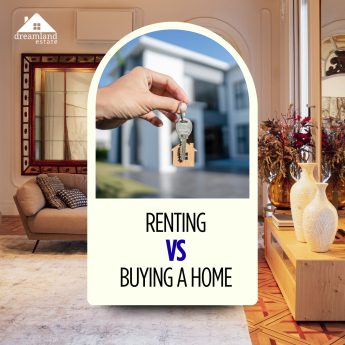What Are Ghost Kitchens: Everything You Need to Know

If you’ve been in the restaurant game for a while, you’ve probably heard the buzz about ghost kitchens. They’re everywhere these days — from urban hot spots to sleepy suburbs — and for good reason.
But what exactly are ghost kitchens, and why are so many restaurateurs and entrepreneurs jumping on board?
Here’s the thing: ghost kitchens aren’t just a fad. They’re changing how restaurants operate, how customers order, and how the entire food business runs.
Whether you’re a veteran owner, a new chef trying to break in, or just curious about the latest industry shake-ups, understanding ghost kitchens could open up some big opportunities.
Let’s break it all down.
What Is a Ghost Kitchen?
A ghost kitchen — sometimes called a virtual kitchen, cloud kitchen, or delivery-only restaurant — is basically a restaurant without a dining room. It’s all about preparing food exclusively for delivery or takeout.
Instead of spending a fortune on a high-traffic location with plenty of seating, ghost kitchens focus on one thing: cooking. Orders are placed online (via apps like Uber Eats, DoorDash, or even directly through your own website), and then the food is sent out for delivery.
Sounds simple, right?
But don’t underestimate it. The ghost kitchen model has opened doors for creative food concepts, cut overhead costs, and given restaurants a way to survive — and thrive — in an era dominated by online ordering.
The Rise of Ghost Kitchens in the U.S.
Here’s a quick reality check: food delivery isn’t going anywhere.
In fact, according to a 2024 report from Statista, the U.S. online food delivery market is projected to surpass $50 billion by 2027. That’s a whole lot of meals ordered with a few taps on a phone.
And that’s where ghost kitchens come in. They’re tailor-made for this shift in customer behavior.
Originally, ghost kitchens gained traction during the pandemic when restaurants needed a way to keep the lights on. But even as dining rooms reopened, these kitchens kept growing.
Why? Lower operating costs, faster experimentation with menu concepts, and the ability to serve multiple brands from one kitchen.
How Do Ghost Kitchens Work?
The mechanics are straightforward — but the magic lies in execution.
- Order Placement: Customers place orders online, usually through third-party apps or a restaurant’s own ordering system.
- Preparation: A team in a ghost kitchen prepares the meals. Sometimes multiple brands share one kitchen space, which makes things even more efficient.
- Delivery: Food is handed off to drivers or delivery platforms. No dine-in. No fuss.
It’s streamlined. It’s efficient. And for the right restaurant owner, it can be very profitable.
Types of Ghost Kitchens
Not all ghost kitchens are created equal. Here’s a quick breakdown:
1. Independent Ghost Kitchens
These are run by individual owners or small teams. Think of it as a traditional restaurant kitchen — just without tables or front-of-house staff.
2. Shared/Commissary Kitchens
Multiple brands or chefs share one space. It’s cost-effective and perfect for startups that don’t want to commit to a long-term lease.
3. Franchise Ghost Kitchens
Big chains like Wendy’s and Chipotle are hopping on this trend by setting up delivery-only kitchens to reach more customers without building full stores.
4. Incubator Kitchens
These are experimental spaces where entrepreneurs can test out new menu concepts before going big.
Pros and Cons of Ghost Kitchens
So, should you dive in? Let’s weigh it out.
Advantages:
- Lower operating costs (no front-of-house staff or prime real estate).
- Flexibility to experiment with menus.
- Ability to run multiple brands out of one kitchen.
- Fast to launch compared to a full-service restaurant.
Disadvantages:
- Heavy reliance on delivery platforms (and their high fees).
- No in-person customer interaction (which means limited brand experience).
- Fierce competition in the delivery-only space.
- Marketing is all on you — no foot traffic to fall back on.
Here’s a quick comparison:
| Aspect | Traditional Restaurant | Ghost Kitchen |
| Real Estate Costs | High | Low |
| Staff Requirements | Front & back of house | Primarily kitchen staff |
| Customer Interaction | In-person | None |
| Launch Time | 6–12 months | 2–3 months |
| Flexibility | Limited | High |
Cost Considerations for Ghost Kitchens
Here’s some good news: you don’t need millions to start a ghost kitchen.
A shared kitchen space can cost as little as $20,000–$50,000 to set up, compared to the $200,000–$500,000+ you might spend opening a brick-and-mortar spot.
Of course, you’ll need to budget for:
- Kitchen rent (shared or private).
- Delivery platform fees (these can eat up 15–30% per order).
- Marketing and branding (since you won’t have walk-ins).
- Tech stack (POS systems, order management, etc.).
Technology Behind Ghost Kitchens
This is where things get interesting.
To make a ghost kitchen work, you’ll need:
- Online ordering platforms (DoorDash, Uber Eats, Grubhub, etc.).
- Integrated POS systems to keep orders organized.
- Inventory management tools to prevent waste.
- Delivery logistics software (or partnerships with third-party providers).
Basically, you’re not just running a kitchen — you’re running a tech-driven food business.
Who Should Start a Ghost Kitchen?
Ghost kitchens aren’t for everyone. But if you:
- Have a strong brand concept that works for delivery.
- Want to expand into new markets without major investments.
- Need a way to test out new menu ideas.
…then this might be your golden ticket.
Challenges and Risks
It’s not all sunshine and takeout orders.
You’ll be competing with big brands on delivery apps. Building a loyal customer base without a physical presence can be tough. And don’t underestimate the impact of third-party delivery fees on your margins.
But here’s the thing: with the right marketing strategy and cost controls, you can still come out on top.
Real-World Ghost Kitchen Examples
MrBeast Burger
Launched by YouTuber MrBeast, this delivery-only concept exploded across the U.S. by leveraging existing kitchens to prepare its menu.
Reef Kitchens
A massive ghost kitchen network operating in urban areas, partnering with well-known brands to deliver food quickly.
These success stories prove that ghost kitchens aren’t just a trend — they’re here to stay.
FAQs About Ghost Kitchens
1. Are ghost kitchens profitable?
Yes — if managed well. Lower costs mean higher profit potential, but margins can be affected by delivery app fees.
2. Do ghost kitchens only work in big cities?
Not anymore. With delivery expanding to suburbs, ghost kitchens are popping up everywhere.
3. Can I run multiple brands from one ghost kitchen?
Absolutely. That’s one of the biggest perks.
4. How long does it take to launch a ghost kitchen?
Typically 2–3 months, depending on permits and setup.
5. What are the biggest challenges?
Standing out online, managing delivery fees, and building brand loyalty without a dine-in experience.
Final Thoughts: Should You Jump In?
Here’s the bottom line: ghost kitchens are reshaping the food industry. They’re not a magic bullet, but for the right entrepreneur, they can open doors to new revenue streams and creative possibilities.
If you’ve been itching to try a new concept or expand your restaurant without the risk of a full build-out, this might just be your chance.
Pro Tip: Start small. Use a shared kitchen. Test your menu. Build a loyal customer base. Then scale. That’s how the most successful ghost kitchens are doing it.
Also Read











Leave A Reply